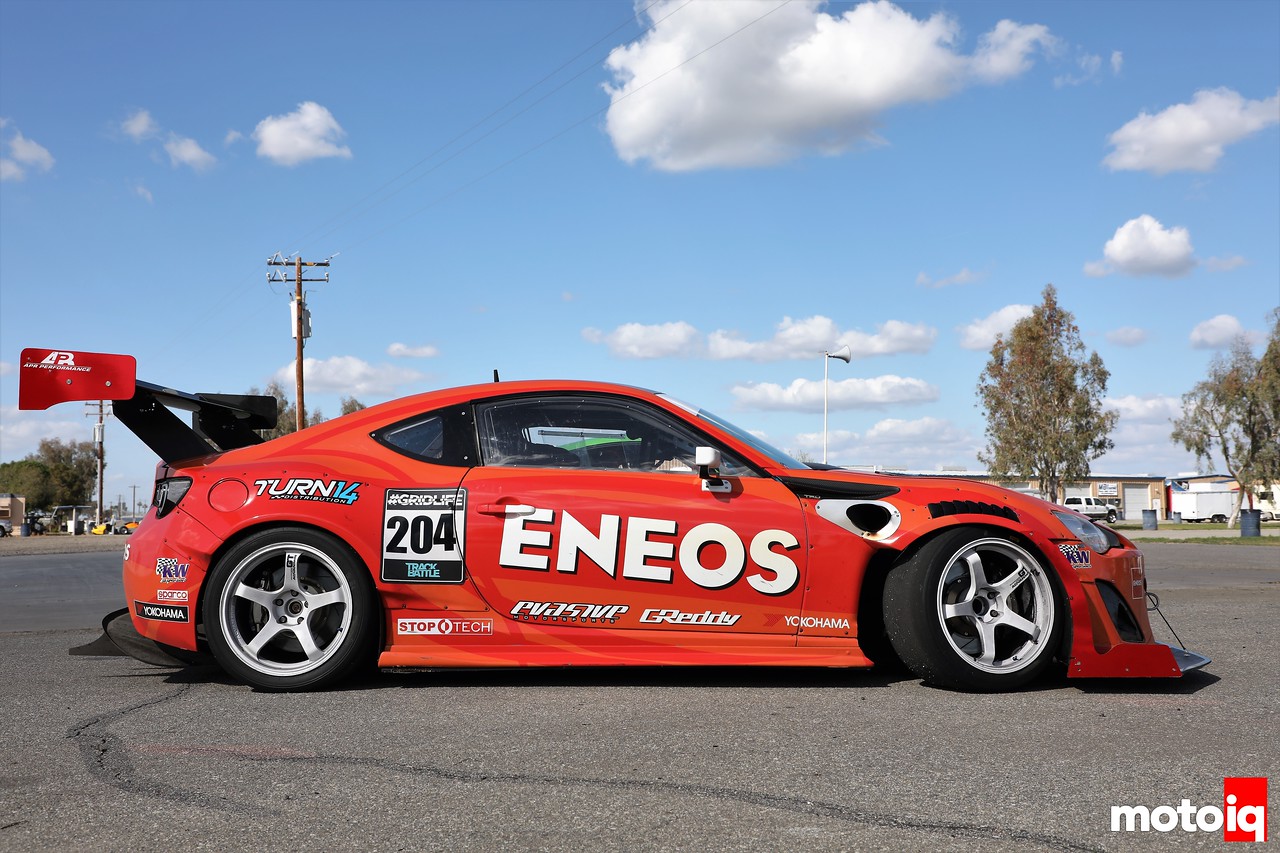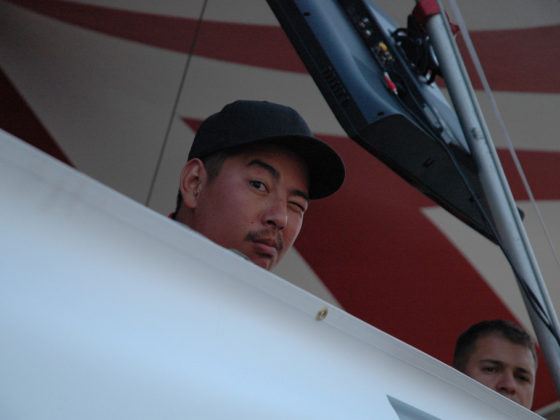
The big coolers needed are not great for the cars aerodynamics but overkill cooling is essential for a car to stay alive going up the hill.

A huge Greddy Intercooler is V-Mounted with the radiator and a huge power steering cooler. The intercooler airflow is diverted out of the hood.

The huge CBR radiator is mounted below the intercooler, V-mount style. The heat exchangers are ducted to the front bumper. So much heat exchanger area was needed that the radiator unfortunately must vent conventionally into the engine compartment. The compromised venting and the large openings in the front fascia are bad for aero and makes it hard for the car to develop enough front downforce. However for Pikes Peak, cooling is king. Even with all the heat exchanger capacity and ethanol fuel, the car will start running hot as the altitude passes 12,000 feet and a large water spray system must be engaged to keep the temps under control.

The engine control is handled by a Motec M130 ECU. The Motec M1 series has tremendous flexibility in setup and tuning. The Motec handles the drive by wire throttle operation, shift aid and traction control functions. Wiring is milspec with all Raychem wire and shrink tubing.

A 12 gallon ATL fuel cell with an exotic Fuel Safe bladder replaces the stock gas tank. Holley Hydramat fuel pickups keep the twin Bosch 044 lift pumps supplied with fuel no matter how much sloshing is going on due to G-forces.




8 comments
Great build and write up. One small note is that the vertical strakes on a diffuser limit spanwise flow. Without them, the air will tend to move laterally across the diffuser surface. Obviously, that reduces the effectiveness of the diffuser. Of course, there’s a small drag penalty, but it’s more than made up for in the aero efficiency.
Fun fact: These strakes were first developed for the swept wing jet fighter aircraft. Because the ailerons are generally located near the wingtips (for the maximum moment arm) the control surface on swept wings was losing ability due to boundary layer separation. This was because the swept wing caused the air to turn outward (spanwise flow.) By introducing a wing fence (vertical strake projecting above boundary layer) you limit spanwise flow and the aileron remains effective, so even under extreme yaw angles.
We did it mostly to try to keep the flow attached with a less than optimal angle. We used a pre-made diffuser to expedite stuff. We might redo it later if there is time and money.
Yeah, it’s difficult to know if the flow is staying attached or separating. Obviously, you can’t use wool tufts, because gravity.
Maybe you could make your own ‘flowviz’ paint, but I think that gravity would make that difficult, too.
Not many good options without a wind tunnel. And no reason to spend $$$ unless you know it’s going to work.
Also, the front end should always see the bulk of the aero effort. If the front isn’t working properly, then it won’t matter what you do at the rear. The flow will be turbulent by then, anyway.
Best of luck on Pikes Peak.
page 5 pic 1
it looks like there’s what looks like a delrin bushing on the knuckle between where the tie rod and LCA connect to it. From what I can tell its between 2 rigid non-moving parts… and its not in the pics of the kit on the Wisefab website… whats its purpose?
It’s a steering stop.
oh i see, that makes sense…
I was low key hoping to see a double wishbone conversion similar to what the HKS time attack car did
Not legal for our events!
that makes sense… I didn’t really consider that